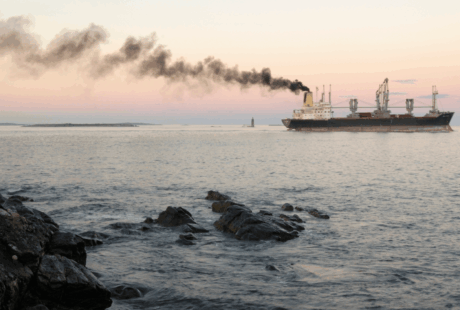Chapter 4: the Levy and Food Security
Grain, spices, fresh fruits and vegetables, meats often start across the ocean, being carried on massive commercial ships. But with the shipping industry starting their journey to decarbonisation, what does this mean for food and their prices? The good news is that through the introduction of a universal levy, a predictable revenue will help balance out any negative impacts a costly decarbonisation strategy may have freight/food prices specifically for countries that are reliant on imports. And this is done in the follow way:
By ensuring predictable shipping costs and food prices: By setting a clear and predictable price for pollution, governments and industry can plan ahead. Unlike credit trading mechanisms, that create price volatility resulting in higher freight costs, a levy reduces the uncertainty in food prices. According to IMO’s own impact assessment (UNCTAD study), scenarios without a levy could increase food import prices by up to 10% in some economies. The introduction of a strong levy will prevent extreme cost variations and ensure families have access to basic food necessities.
Through targeted support to vulnerable economies: For developing nations, in particular Least Developed Countries (LDC) and Small Island Developing States (SIDS), are often reliant on imported food goods due to their geographical location and can be a lifeline for many communities. A well-designed levy will ensure that these nations, who are often subjected to higher import costs due to the distance from major trading hubs, will receive the benefits of the collected revenue. The IMO’s impact assessment even shows that redistributing levy funds to these vulnerable countries can increase their import volumes, strengthening food security in times of climate instability.
Avoiding disruptions to food supply chains: Food security is dependent on strong supply chains. Introducing a credit trading mechanism may result in empty shelves or delayed shipments as it throws supply chains into disarray with fluctuating compliance costs. A levy, on the other hand, keeps food supplies consistent. The funds can be put towards infrastructure improvements, port upgrades and supply chain resilience, even as the shipping industry decarbonises.
Funding an equitable and just transition: A major challenge in the transition to decarbonisation is ensuring that low-income countries have equal access to clean fuels, and financial support is key. The IMO’s impact assessment estimates that around $50 billion in grants and concessional finance is needed to help these countries access green fuels and modernise their shipping industry. Revenues gathered from an ambitious levy can be used to support these investments. Without such initiatives, only wealthy countries will be able to uptake cleaner fuels, leaving developing nations lagging behind.
Avoiding expensive delays: Cutting corners and looking for short-term solutions can have disastrous long-term impacts. Without funding clean e-fuels now, the shipping industry risks locking itself into harmful, suboptimal “solutions” or rather fixes, like fossil-based LNG and biofuels, which will only demand expensive adjustments later. The IMO’s impact assessment shows that the revenues from the levy should be invested in renewable e-fuels, keeping the transition on track and affordable in the long-run.
Conclusion – The financial compass we need
Enforcing an ambitious levy is not just about reducing GHG emissions: it’s about protecting communities and ensuring equality. The stable revenue that it brings can go towards supporting those who need it most and preventing food price volatility. A levy that acts as a financial compass to keep food prices and supple chains stable, whilst aligning with decarbonisation targets will drive the shipping industry to a cleaner and fairer future.
Posted on: 2 April 2025


